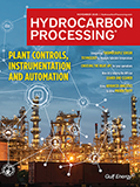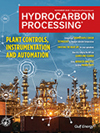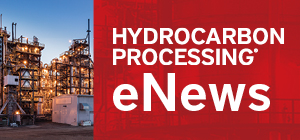Pre-FEED results indicate doubling of value for NH3 Clean Energy’s WAH2 project in Australia
- Efficiencies increase Phase 1 capacity from 600,000 tpy to 650,000 tpy.
NH3 Clean Energy Limited has released a summary of the preliminary front-end engineering and design (pre-FEED) for its flagship WAH2 Project, together with updated project economics that highlight significant improvements over the preliminary feasibility study results.
NH3 engaged Petrofac, a leading international service provider to the energy industry, to undertake the pre-FEED technical scope of work in collaboration with Topsoe A/S, the leading industry provider of the core ammonia production technology selected.
The pre-FEED work defined a single base case to take into FEED. The design's flexibility allows for further emissions reduction during operations - allowing the project to meet evolving market demands, regulatory requirements and the eligibility criteria for potential government incentives.
In parallel to the technical Pre-FEED studies, NH3 has significantly developed and de-risked the project by securing preliminary commercial agreements for key elements of the project, including:
- A Key Terms Agreement with DevelopmentWA for the 40 Ha site allocated to NH3 by the WA Government
- Confidential agreements regarding majority gas supply for WAH2’s Phase 1 requirements.
- A Key Terms Agreement with the Water Corporation4 of WA for the supply of water to the WAH2 Project.
- A Memorandum of Understanding with the Australian Gas Infrastructure Group5 (‘AGIG’) regarding transport of CO2 to either of the two sequestration sites being considered. NH3 is in separate confidential discussions with both CCS projects, each of which has the capacity to sequester WAH2 Phase 1 CO2 volumes.
- A Memorandum of Understanding with Pilbara Ports6 outlining the collaboration intended to support ammonia export from the WAH2 Project.
The indicative pricing provided by these agreements and ongoing confidential discussions is reflected in the Pre-FEED economics updating earlier assumptions, increasing confidence and reducing uncertainty. The results of Pre-FEED demonstrate that the WAH2 Project exhibits strong economic viability.
The Phase 1 Base Case delivers NPV8 of A$493 M at an Internal Rate of Return (‘IRR’) of 11.6%. This Base Case is resilient, retaining positive NPV8 across key downsides. Project financing would increase equity returns, conservatively increasing Phase 1 Base Case NPV8 to A$607 M at IRR of 14.4%. Phase 2 indicates significant growth, with the combined Phase 1 and 2 Base Case delivering an NPV8 of A$951 M, and an IRR of 12.5%.
Project financing could conservatively increase equity returns to A$1,087 M at an IRR of 15.0%. Identified opportunities related to infrastructure sharing have the potential to improve base case economics further. These will continue to be progressed in parallel to FEED. NH3’s ‘keep it simple’ integrated design and delivery philosophy (based on the five principles of proven technology, existing supporting infrastructure, established providers, global practitioners and maximum modularization) supports a globally competitive cost of production and has received positive feedback from potential customers. Meanwhile the competitive position of the WAH2 Project has been strengthened and the relevance of Phase 2 increased due to electrolysis-based projects struggling with much higher costs which has stalled or terminated many competing projects.
NH3 continues to advance discussions with strategic partners, offtakers, and financiers as it progresses towards FEED-entry targeted for Q2 2025.






Comments